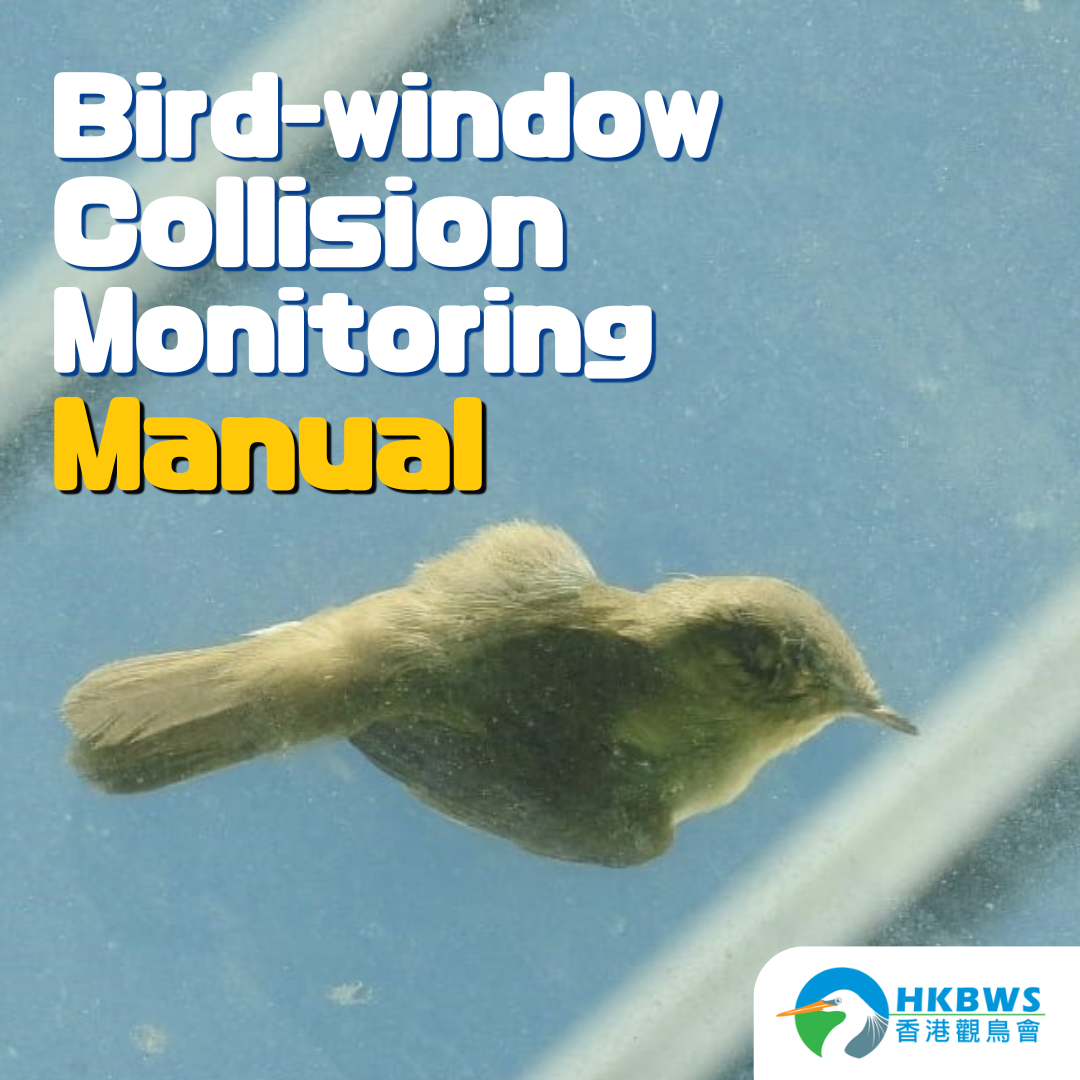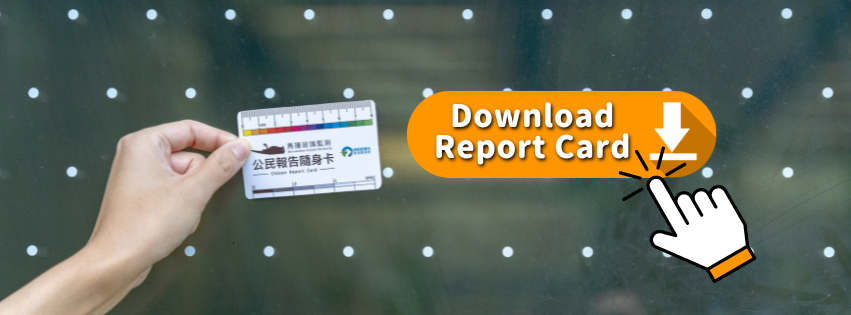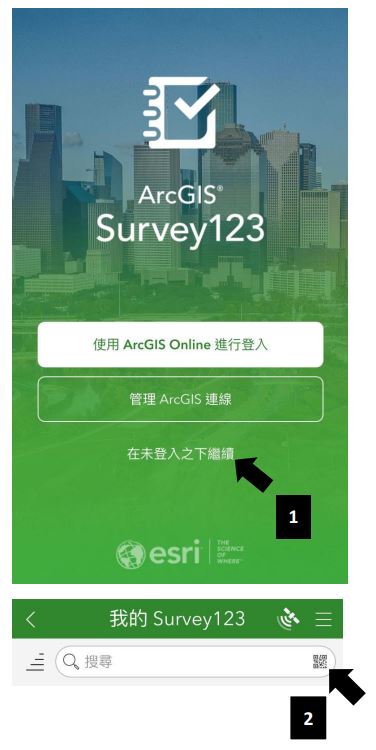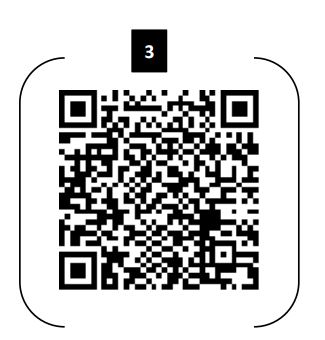Bird-window-collision is one of the hidden deathtraps in our urban environment. Bird collision occurs when a bird fails to perceive glass structure as barrier and crashes into it. Window collision can result in bird mortality. According to the bird-window-collision report published by the Hong Kong Bird Watching Society in 2024, up to 309 birds were found dead or injured from window collision in just a year, from September 2022 to August 2023.
How can we judge if a dead bird was killed by window-collision? Having a look at the birds and surroundings, if it matches the following criteria, it's probably a bird collision [1]:
1. Bird’s body remains intact, with signs of broken bones or blood spitting. Fewer visible injuries
2. Structures found within 5m of dead bird, e.g. exterior wall and noise barrier, are made of glass or reflective materials
3. Surface of collision can reflect natural landscape, e.g. trees, mountains and distant sceneries
What should we do when we encounter collision-related bird deaths or injuries?
First, if the bird is dead, you can report to AFCD via 1823 for handling of collision dead birds. If you find an injured or baby wild bird, please contact authorized wild animals rescue organisations immediately for rescue. Meanwhile, we may need to gently put the bird inside a cardboard box or any containers that have ventilation holes, and then place it at a safe and warm place to wait for the rescue team to pick it up. You may refer to our leaflet or KFBG guidelines about handling injured wild birds.
Second, you can report suspected cases of bird collision with the necessary information (i.e. Photo of injured or dead bird, photo of the glass structure involved, date of collision, Exact GPS Location, Status of bird, Species (optional), Side of building, Detailed field notes (optional) to Global Bird Collision Mapper, or send us an email at This email address is being protected from spambots. You need JavaScript enabled to view it.. Hopefully the data collected will help monitor the bird-window-collision in Hong Kong, and serve to promote bird-friendly building designs and to protect countless birds from harm.
Global Bird Collision Mapper is an online geo-mapping tool designed for citizens to report the locations of bird collisions with buildings and is available on desktop and mobile devices, without registration needed. The database is international and can be seen by anyone who visits the webpage.
| Viewing the data | |
|
 |
| Reporting a Collision via website | |
|
|
| Reporting a Collision via mobile app | |
|
|
| Input Detailed Information | |
|
1. Attach bird and environment photo(s) (maximum number of photos: 3) |
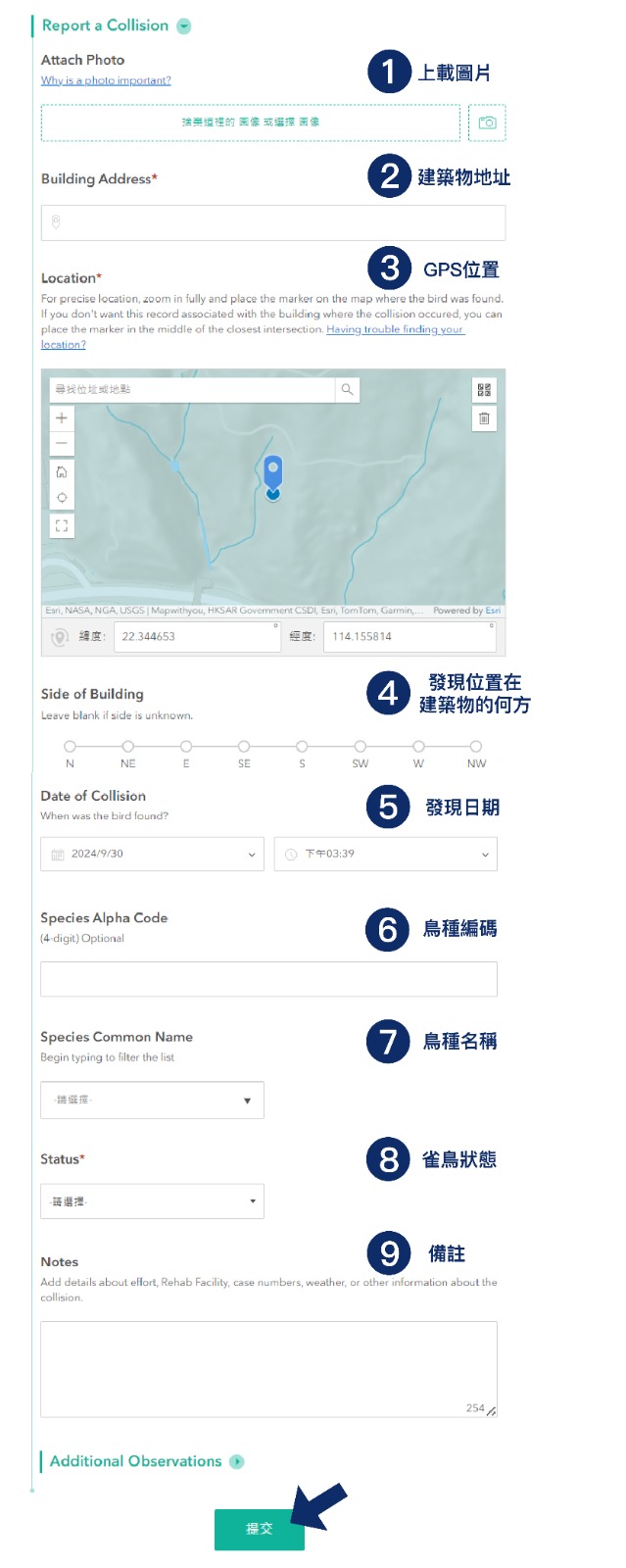 |
| 2. Enter Building Address | |
3. Select location by either:
|
|
|
4. Select the side of the building where the bird was found |
|
| 5. Select the date and time of encouter | |
| 6. Type in Species Alpha Code (You may leave it blank) | |
| 7. Search for the species by its common name (If you are not sure about the species, leave this field "Unknown") | |
8. Click on the status of the bird as either:
|
|
|
9. Include detailed field notes (optional):
|
|


